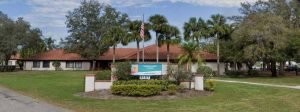MEADOWS CENTER FOR NURSING AND HEALING
Are you interested in knowing more about the meadows center for nursing and healing? If so, then you are on the right page. Feel relaxed and make sure you read the post to the end.

The Meadows Center for Nursing and Healing is an average-sized nursing home located in Sarasota, Florida. With an overall score of B-, this is likely a solid nursing home. Based on our analysis, there are certainly far worse places out there. This place is better in some categories than others, but it did not have any poor grades in any of the major categories. More information about these categories can be found below.
Contents
About Meadows Center For Nursing And Healing, The
General Information
| Legal Business Name | Pinnacle Health Facilities Xxiii Lp |
| Ownership Type | For profit – Limited Liability company |
| Changed Ownership In The Last 12 Months | No |
| First Accepted Medicare | July 27, 1990 (32 years) |
| Capacity | 120 |
| Average Residents | 107.8 |
| Percent Occupied | 90% |
| Program Participation | Medicare and Medicaid |
| Resident And Family Councils | Both |
| In Hospital | No |
| Continuing Care Retirement Community | No |
| Special Focus Facility | No |
| Auto Sprinkler System In Required Areas | Yes |
Types of Problems at Nursing Homes
Some issues within a nursing home are much more severe than others. Medicare evaluates each problem based on 2 scales: the number of residents affected by a problem and the severity of the potential or actual harm to residents based on the problem. We have color coded the matrix below to make it easier to pick out the more severe problems. In general, orange and red issues related to the treatment of a resident are considered substandard quality of care.
| Residents Affected | |||
| Severity of the Deficiency | Few | Some | Many |
| Immediate jeopardy to resident health or safety | J | K | L |
| Actual harm that is not immediate jeopardy | G | H | I |
| No actual harm with potential for more than minimal harm that is not immediate jeopardy | D | E | F |
| No actual harm with potential for minimal harm | A | B | C |
Nurse Quality
Grade: B-plus
This nursing home received a nursing score which is stronger than its overall grade. We awarded this nursing home an above average grade of B+ in this area. The nursing grade assesses many datapoints, but the most important consideration is the quantity of nurse hours per patient per week. This facility provided 0.4 hours of nursing care per resident per day. Finally, our nursing grades also factor in quality-based assessments, such as avoiding major falls. This nursing home performed well in this area. Avoiding major falls is typically a good indicator that a facility has reliable quality controls in place. Major falls can typically be prevented if more nurses aids and better safety protocols are in place.
Facility Inspections
Grade: B
This facility also received favorable government inspections in recent years. We gave them one of our better scores in that category, with a grade of B. Inspection ratings are tied to many items located in the a nursing home’s recent government inspections. Nursing homes that receive favorable grades in this category have few deficiencies on those reports. Most importantly, these nursing homes should not have any severe deficiencies which are associated with endangerment of patients. This place received 4 deficiencies on its inspection report, but none of the deficiencies were considered severe. This indicates that CMS did not deem any of the deficiencies to pose an immediate risk to resident safety or health. We should note that deficiency-free inspections are rare in this industry.
Short-term Care Quality
Grade: B
This nursing home also was awarded a favorable short-term care grade. Indeed, we awarded them a B in this area, which is one of our more favorable scores. In computing these short-term care scores, we quantify the facility’s skilled nursing services, including those performed by registered nurses, speech therapists, physical therapists and other types of therapists. The objective is to formulate a tool for comparing the rehabilitation services of various nursing homes. Fortunately, it looks like this nursing home employs registered nurses. Not all nursing homes employs these skilled professionals. On the other hand, according to the data they provided, it does not look like the facility employs physical therapists. Finally, we looked at the percentage of patients who ultimately were able to return home from this facility. We found that 4.4 percent of this facility’s patients were able to return home.
Long-term Care Quality
Grade: C
The final category we looked at is long-term care. We awarded this nursing home a grade of C in this area. With our long-term care rating, we focus on the sheer quantity of services provided by a facility, along with a few qualitative measures. Once we assessed the volume of nursing care, we then looked at the nursing home’s vaccination record. We were pleased to learn that this nursing home vaccinated 100 percent of its residents for pneumonia. Lastly, this nursing home was also able to limit hospitalizations. It had less than one hospitalization per 1,000 long-term resident days, which is an impressively low number.
The Meadows Center for Nursing and Healing Quality Metrics
Minimizes Pressure Ulcers
Grade: B
In The Meadows Center for Nursing and Healing, 9.03% of Patients had Pressure Ulcers
This tells you the percentage of patients that suffered from a pressure ulcer. Pressure ulcers are considered to be a measure of the quality of nursing care . Pressure ulcers, which are also referred to as bed sores, are routinely the result of patients not being moved frequently enough.
Minimizes Serious Falls
Grade: B
In The Meadows Center for Nursing and Healing, 2.8% of Patients had Serious Falls
This is the percentage of residents that suffered from a fall which resulted in severe injury.
Minimizes Urinary Tract Infections
Grade: A-minus
In The Meadows Center for Nursing and Healing, 1.82% of Patients had UTIs
This indicates the percentage of patients who suffered from a urinary tract infection. UTI’s are routinely linked to facilities with lower levels of hygiene. Better hygiene protocols reduces the percentage of residents in a nursing home who suffer from UTI’s. We want to point out that this metric is affected by by the fact that facilities have varying reporting standards for infections.
READ ALSO:MEDICAL PEDICURE
Appropriately Uses Anti-Psychotic Medication
Grade: A-plus
In The Meadows Center for Nursing and Healing, 10.99% of Patients use Anti-Psychotic Medication
This is the percent of residents given antipsychotic drugs. Antipsychotic medications are given to residents for many medical conditions, including dementia. Tragically, in some cases, excessive reliance on these medications may suggest that a facility is using these drugs to subdue residents.
Appropriately Uses Anti-Anxiety Medication
Grade: B-plus
In The Meadows Center for Nursing and Healing, 21.46% of Patients use Anti-Anxiety Medication
This indicates the percentage of patients given antianxiety drugs. These medications are given to residents suffering from depression or anxiety.
Managing Depression Among Residents
Grade: A+
In The Meadows Center for Nursing and Healing, 2.43% of Patients
This indicates the percentage of residents who are showing depressive symptoms.
Appropriate Vaccine Usage
Grade: A
In The Meadows Center for Nursing and Healing, 94.61% of Patients
Measures the percentage of long-term residents who received the flu and pneumonia vaccines.
Residents Maintain Autonomy
Grade: B-plus
In The Meadows Center for Nursing and Healing, 13.17% Percentage of Patients
This tells you the percent of residents that required more assistance with activities of daily living over time.
Ability to Keep Residents Mobile
Grade: C
In The Meadows Center for Nursing and Healing, 18.15% Percentage of Residents
This indicates the percent of residents that remained mobile levels over time. Retaining mobility is often a great sign for residents’ well-being.
Hospitalizations
Grade: B-plus
In The Meadows Center for Nursing and Healing, 1.59 Hospitalizations per 1,000 resident days
This tells you the number of times residents are hospitalized per 1,000 days of patient care. There is usually a correlation between avoiding hospitalizations and the quality of care.
Short-term Care: Rehospitalizations
Grade: A-minus
In The Meadows Center for Nursing and Healing, 18.15 Percentage of Residents Rehospitalized
Measures the number of times residents are rehospitalized per thousand days of short-term patient care.
Short-term Care: ER Visits
Grade: A-minus
In The Meadows Center for Nursing and Healing, 9.19 Percentage of Patients
This is the number of emergency room visits per thousand days of short-term patient care. There is generally a correlation between reduced emergency room visits and the quality of care.
Short-term Care: Facilitates Functional Improvement
Grade: A
In The Meadows Center for Nursing and Healing, 77.65% Percentage of Resident
This is the percentage of short-term stay residents that experienced functional improvements, such as with activities of daily living. High levels of autonomy with ADL’s generally correlates with better rehabilitation services.


